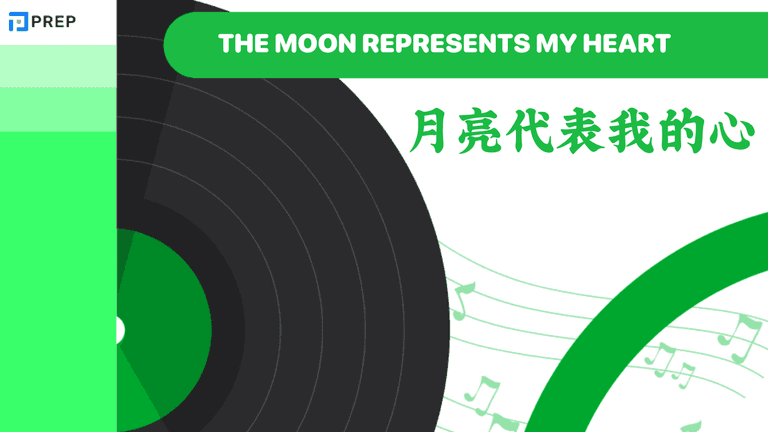Pronounce Chinese Correctly: Tones, Pinyin, and Sounds
Pronouncing Chinese correctly starts with understanding pinyin and tones. In this guide, you'll learn how Chinese pronunciation works, common sound mistakes to avoid, and how to build a daily practice routine. Perfect for beginners who want to sound natural and confident.
I. What “pronounce Chinese” means for beginners
To Pronounce Chinese isn’t simply about reading out syllables. For beginners, it means learning how to produce the correct sounds, tones, and rhythms that make spoken Mandarin clear and natural. Since Chinese is a tonal language, pronunciation is not only about accuracy — it’s about meaning.
In Mandarin, tone determines what a word means. Take the syllable “ma,” for example:
- 妈 (mā - tone 1): mother
- 麻 (má - tone 2): hemp
- 马 (mǎ - tone 3): horse
- 骂 (mà - tone 4): to scold
- 吗 (ma - neutral tone): question particle
For learners, mispronouncing tones can cause confusion or unintended meanings — making proper pronunciation a non-negotiable skill from day one.
Unlike English, which often blends multiple syllables together in a flowing rhythm, Mandarin Chinese is monosyllabic and syllable-timed. Each syllable carries a tone and is clearly separated in speech:
- “Nihao” (你好) is not “nee-how” said quickly, but two rhythmic beats: nǐ + hǎo
- Clarity in pronunciation depends on keeping syllables distinct
As a beginner, focusing on intonation and pinyin clarity saves you time in the long run. Poor tones will eventually:
- Limit your speaking confidence
- Confuse native speakers (even if your grammar is perfect)
- Make listening comprehension harder
Learning how to “pronounce Chinese” properly from the beginning helps you build true speaking and listening fluency, not just read or memorize words.
II. The Pinyin System: The Foundation of Chinese Pronunciation
To pronounce Chinese accurately, you first need to understand pinyin (拼音)—the official system that shows you how to read Chinese characters using the Latin alphabet. While it looks familiar to English speakers, pinyin represents unique sounds that often don’t match English spelling rules.
Pinyin is not a translation system — it's a pronunciation guide. Each Chinese character corresponds to one syllable in pinyin, which is made up of three parts:
- Initial (the beginning consonant sound): e.g. b, d, j, zh
- Final (the vowel or vowel combination): e.g. a, ai, ong, ian
- Tone marker (indicates pitch): e.g. mā (tone 1), má (tone 2)
For example: 吃 (chī) = ch (initial) + i (final) + tone 1 → Means “to eat”
Many beginners assume pinyin matches English phonics. This is a major trap that leads to bad habits in pronunciation. For instance:
|
Pinyin |
Common Mistake (English-style) |
Correct Sound |
|
x |
sounds like “eks” |
soft “sh” with lips spread (like "shee") |
|
zh |
sounds like “zuh” |
similar to “j” in "jungle", with more curl |
|
ü |
ignored or read as plain “u” |
a rounded “i” sound (like “ü” in German) |
Understanding these subtle differences trains your muscle memory, which in turn makes your tone production and word flow far more natural.
III. How to Pronounce Chinese Tones Naturally
In Mandarin, tones are not optional — they are essential. Each syllable in Chinese is pronounced with a specific pitch contour (tone), and changing the tone completely changes the meaning of a word. To speak Chinese naturally, you need to train both your ear and your voice to recognize and reproduce these tones fluently.
Mandarin Chinese has four main tones and a neutral tone (tone 5)
|
Tone |
Name |
Tone Mark |
Pitch Movement |
Example |
Meaning |
|
1 |
High-level |
mā |
Steady high ( ¯ ) |
妈 (mā) |
mother |
|
2 |
Rising |
má |
Rising ( ˊ ) |
麻 (má) |
hemp |
|
3 |
Falling-rising |
mǎ |
Dip then rise ( ˇ ) |
马 (mǎ) |
horse |
|
4 |
Falling |
mà |
Sharp fall ( ˋ ) |
骂 (mà) |
to scold |
|
5 |
Neutral |
ma (no mark) |
Light, unstressed |
吗 (ma) |
yes/no question |
Tone = meaning. Confusing tones can lead to embarrassing misunderstandings (e.g., calling someone "horse" instead of “mom”).
Just like training your ear for music, tone mastery comes from repetition and listening. Here’s how to build natural tone control:
- Use tone pairs (two-syllable combos) to build flow
→ Ex: nǐ hǎo is not tone 3 + tone 3! It becomes ní hǎo (tone 2 + tone 3) due to tone sandhi rules - Mimic native speakers daily (shadowing technique)
- Practice with minimal pairs: mā / má / mǎ / mà
- Record your voice and compare with native audio
Learning to pronounce tones naturally takes time, but it’s absolutely achievable. With daily exposure, active listening, and focused practice, tonal speech can become instinctive.
IV. Chinese Sounds You Might Be Saying Wrong
Even with a solid understanding of pinyin and tones, many learners still mispronounce key Chinese sounds—especially those that don’t exist or behave differently in English. Recognizing and fixing these common pronunciation mistakes will help you sound more like a native speaker and avoid misunderstandings.
Initial Sounds That Don't Exist in English
Some pinyin initials look familiar but sound completely different, especially sounds like zh, ch, sh, j, q, x, and r.
|
Pinyin |
Common Mistake |
Correct Pronunciation Tip |
|
zh |
Read as “z” or “j” |
Like “j” with a curled tongue (retroflex) |
|
ch |
Read as “ch” in “chat” |
Stronger, with a puff of air (aspirated) |
|
sh |
Read as English “sh” |
Similar, but tongue curled slightly further back |
|
j |
Read as hard “j” |
Softer, unaspirated, tongue touches front of palate |
|
q |
Read as “k” or “ch” |
Like “ch” in “cheese,” but airier and sharper |
|
x |
Read as “s” or “sh” |
Like “sh” with lips spread wide – a soft hiss (like "shee") |
|
r |
Read as English “r” |
Not the same—soft, almost between “r” and “zh”; no rolling |
Tip: Think of where your tongue is placed in your mouth. Position is everything in Mandarin pronunciation.
Final Sounds and Nasal Endings That Cause Trouble
Finals (ending sounds) can also trip up beginners—especially nasal sounds (-n vs -ng) and unique vowels like ü (yu).
|
Final |
Common Error |
Correct Tip |
|
-n vs -ng |
Pronounced the same |
Try saying “an” vs. “ang”; don’t drop the final “g” sound |
|
-ian vs -iang |
Blurred together |
-ian is crisp, flat; -iang stretches the “i” and has a deeper ending |
|
ü |
Replaced with “u” (as in “you”) |
Make a tight-lip “ee” sound, then round your lips like saying “oo” |
Examples:
- 女 (nǚ): “girl” → ü sound, not “nu”
- 听 (tīng): “listen” → ends in nasal “-ng”
- 面 (miàn): “noodles” → ends in clean “-n”
Your goal isn’t perfection on day one — it’s awareness. With repeated practice and focused listening, your mouth and ears will train together for long-term accuracy and fluency.
V. FAQs About Chinese Pronunciation
Still have questions about how to pronounce Chinese correctly? You're not alone. Here are answers to some of the most frequently asked questions from beginner-level learners trying to build solid pronunciation habits.
- Do I need to learn tones from day one?
Yes — absolutely. Tones are not optional in Mandarin; they are part of every word’s meaning. Delaying tone practice will make it harder to fix bad habits later. Start slow, focus on clarity over speed, and build a strong tonal foundation even with just a few words. - Can I learn just pinyin and skip characters?
In the short term, you can learn to speak using only pinyin, especially in beginner apps or classes. But long-term fluency — especially reading or writing — requires learning Chinese characters. Think of pinyin as a learning tool, not a replacement for the language. - Is pronunciation or vocabulary more important at first?
Both matter, but pronunciation should come first. Mispronounced words often lead to communication breakdowns, even if your vocabulary is wide. It’s better to know fewer words and say them clearly than many words no one can understand. - How long does it take to sound natural in Chinese?
It depends on consistency, technique, and your language background. For most learners, basic pronunciation becomes comfortable within 3–6 months of regular practice. Natural fluency in tones and flow may take longer — but daily listening + speaking makes a big difference. - What if I only care about casual speaking, not fluency?
Even basic casual speaking still requires clear pronunciation. If your goal is to travel, make friends, or live in a Chinese-speaking area, your pronunciation affects how people listen and respond to you — even more than grammar.
Mastering how to pronounce Chinese is key to being understood and building real confidence when speaking. With pinyin, tones, and daily practice, your pronunciation will improve steadily.
Start small, stay consistent, and let clarity lead the way. Try our free tone practice deck to begin speaking more naturally today.

Hi I'm Chloe, and I am currently serving as an Product Content Administrator at Prep Education. With over five years of experience in independent online IELTS study and exam preparation, I am confident in my ability to support learners in achieving their highest possible scores.











